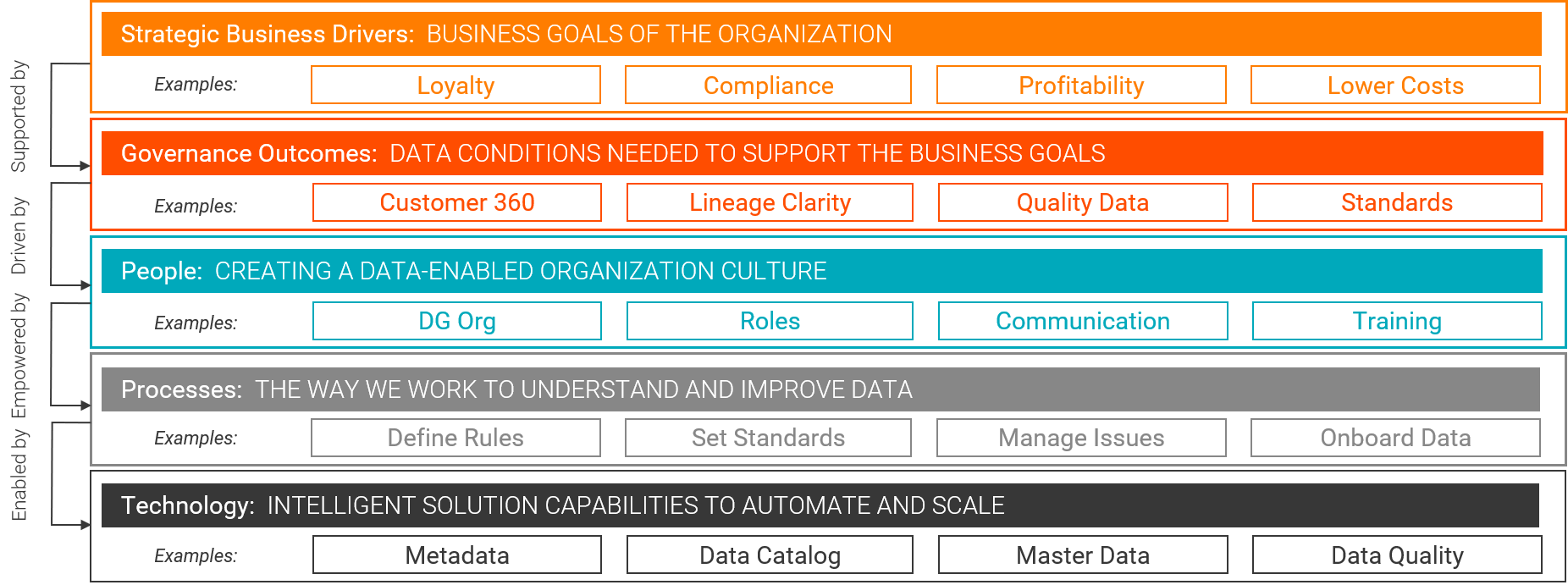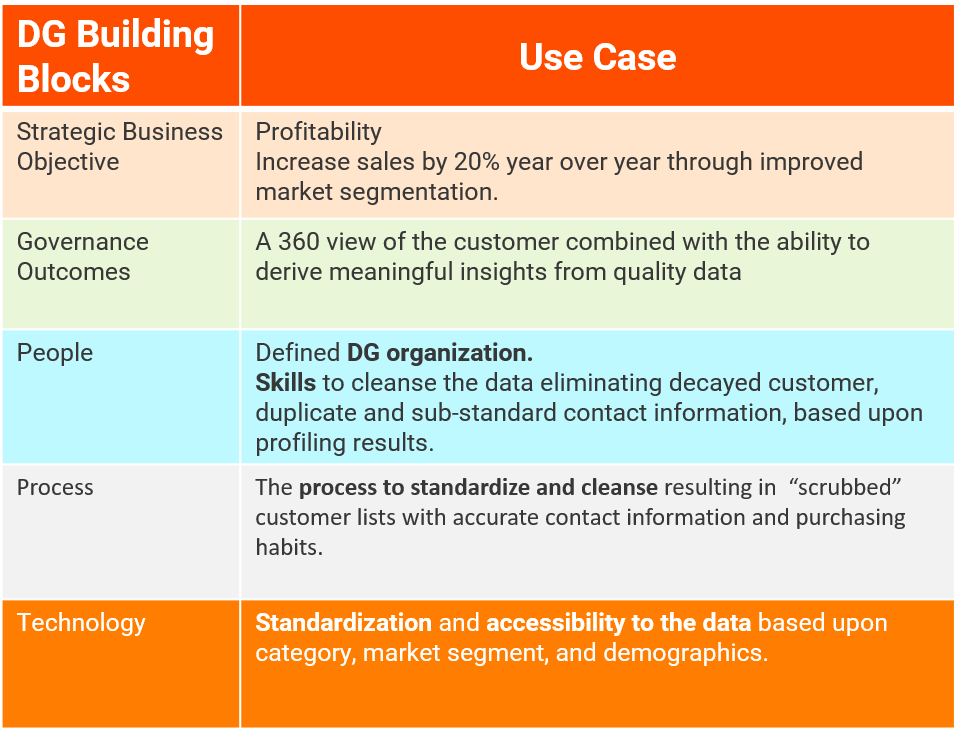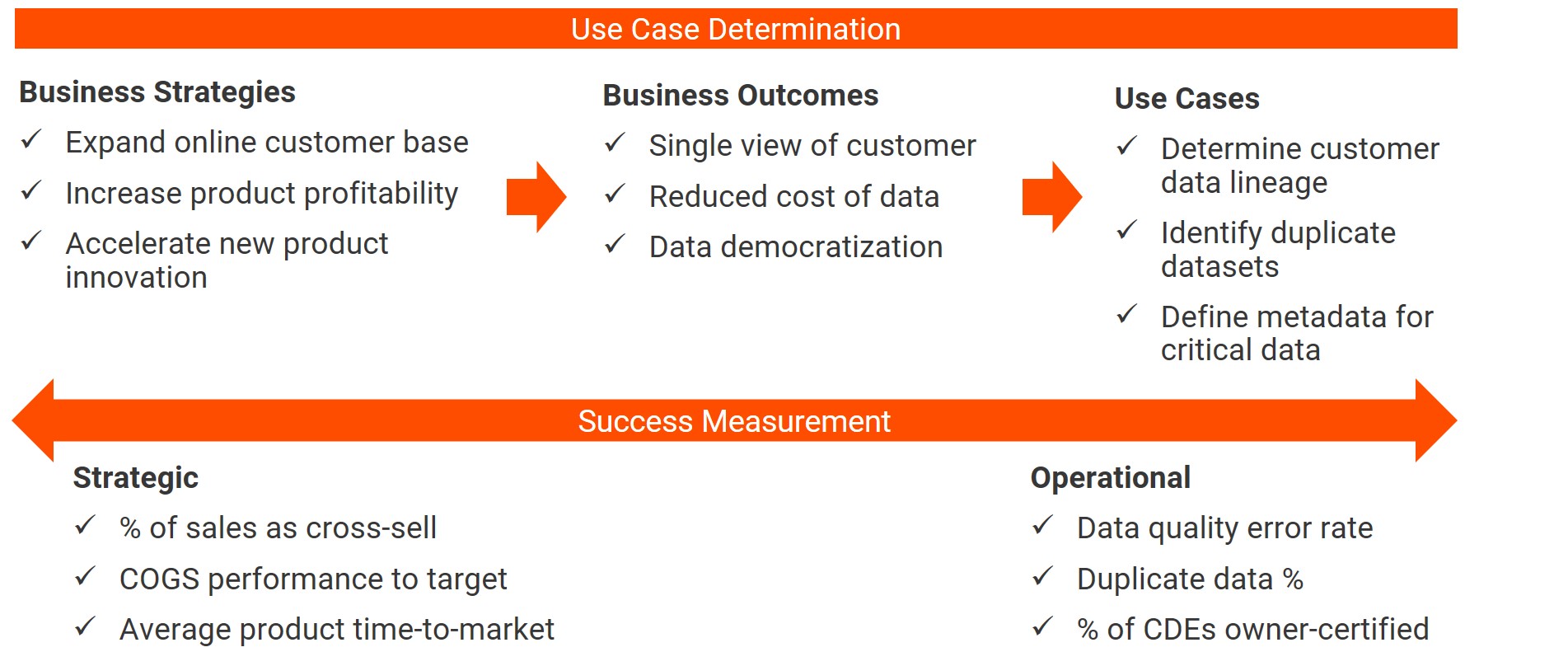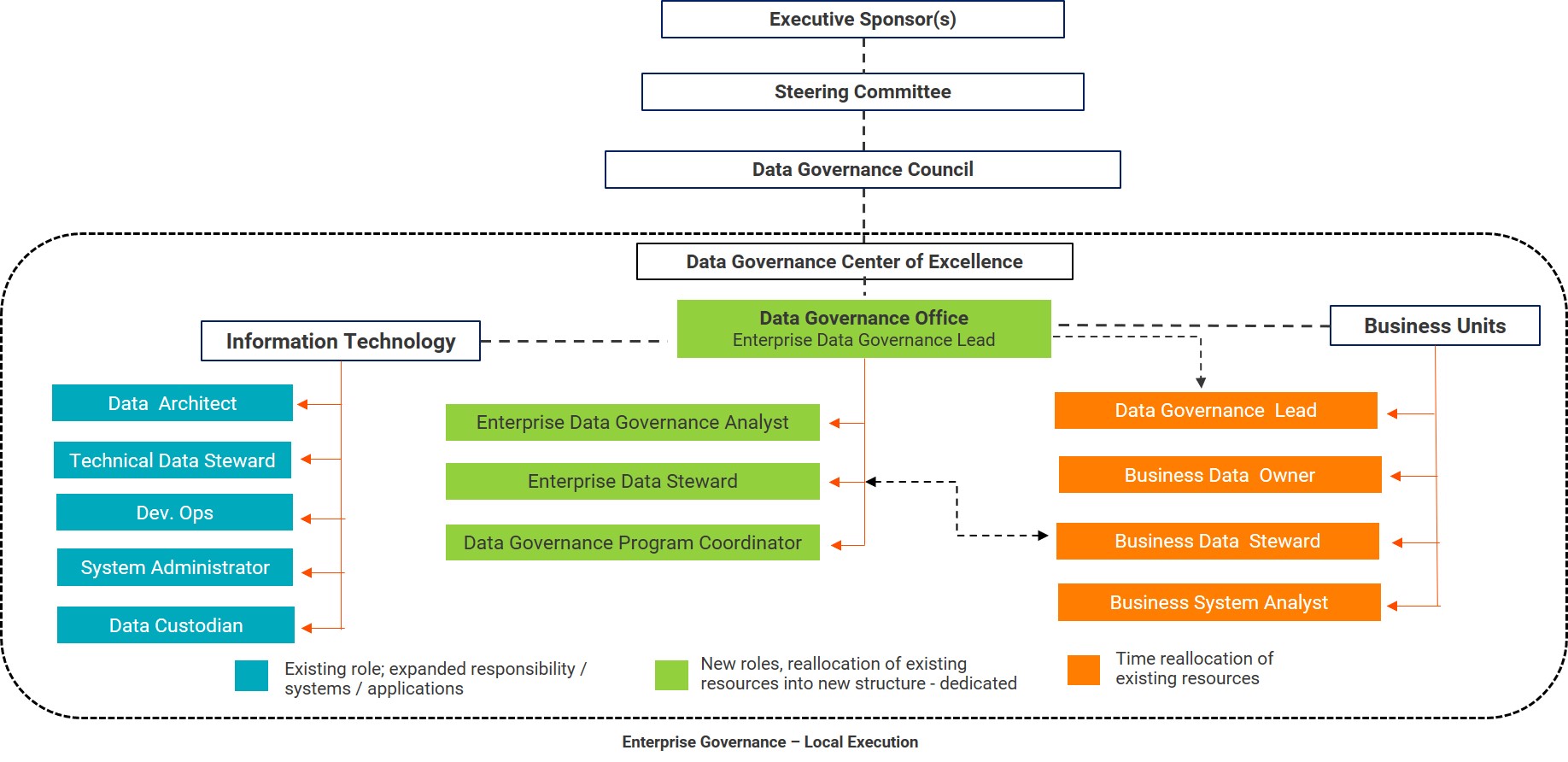“Just enough” data governance is an efficient path to enterprise data governance that starts by building early credibility in a strategically chosen area—and using it as a springboard to further success.
Recently there has been much discussion surrounding Predictive Analytics, Self-Serve Analytics, Data Democratization, and more. Topics such as structured data, unstructured data, data lakes, data warehouses, and most recently Cloud Lakehouse Data Management, can cause a relatively simple topic to seem overwhelming. It can become difficult to figure out how and where to start, resulting in not doing anything feeling like a viable solution. A lack of action only makes the problem worse - becoming a detriment to an organizations bottom line. All brought about by the myriad of data available. Having a strong data governance program helps demystify an organization’s data and organize it in a meaningful way. This enables an organization to leverage data as the asset it truly is. Benefits of having an Enterprise Data Governance program include:
- Having the capability to effectively and rapidly address new regulatory compliance mandates
- Enhanced visibility into data lineage for reports and audits
- Enabled self-service and next generation analytics
- Democratized data silos to promote shared data
- Implementation of systematic data quality monitoring and remediation
- The ability to manage the data lifecycle from inception to archival
- Development of business rules for MDM and data interfaces
- Enhanced preparation for hybrid/cloud transformation
Where and how to get started in the governance of an organizations data is a question asked by many. The technology platform, while an enabler to the solution, is not a substitute for having a sound data governance strategy. Once this is understood, the often-asked question is “How do I get started?"
Like building a house, having a blueprint to guide the process is essential to what goes where and the overall flow. If you get this right, the balance will naturally fall into place. Utilizing the same concept and methodology for data governance will enable an organization to successfully manage and understand its data assets, starting with the highest priority business needs.
Following is a methodology that facilitates the acceleration of time to first value, utilizing the Informatica Data Governance Framework as the blueprint to building a sustainable program.
Let’s talk about the specifics of using the Framework as the blueprint for designing your Data Governance program by starting with the foundational building blocks:
- Strategic Business drivers
- Governance Outcomes
- People
- Process
- Technology
Building a Data Governance Program – One Step at a Time
This framework is a conceptual model that helps an organization focus on what matters most. Many organizations focus on the technology without consideration of the Data Governance components required to achieve the desired business outcomes. Technology itself is not a Data Governance operating model. By taking a top down approach we create alignment to ensure focus.
The Informatica Data Governance Framework
Measure and Monitor (Business and Technology KPIs)

What does this mean?
Understanding the Strategic Business Drivers is foundational. Until the desired business outcomes are defined and communicated throughout the organization, the organization will have difficulty aligning Enterprise Data Governance to the needs of the business.
Let’s look at an example of how this plays out utilizing the Informatica Data Governance Framework.

In the example above, the strategic business objective is Profitability. Specifically, this organization wants to increase sales by 20% through improved segmentation.
From a governance perspective, they need to have a 360 Business view of customer and improved quality.
In order to achieve this goal, the organization will need to define their governance and ensure they have the Data Quality skills to rationalize customer data.
Alignment of business outcomes and value manifests itself into required Data Governance outcomes. Connecting the dots from strategic drivers to operational metrics is the key to continued buy in and success of the Data Governance Program as depicted in the diagram below.
Focus on Driving Business Value

Data Governance Organization: Aligning the people to the process
There is not a one size fits all approach to establishing a data governance structure. While there are a few common structures (centralized, decentralized, federated), each with pros and cons – today’s prevailing model is Federated. At the core of the Federated model is a Data Governance Center of Excellence (COE). By establishing a COE, the organizational structure will innately involve members from the Senior Leadership Team (SLT). The SLT will authorize, promote and cascade the expectations for development of policies and data management best practices as an integrated program. The responsibility for articulating those policies and standards that meet day to day business needs then drives the development of rules by which to execute data management practices, such as data quality thresholds, metadata definitions, master data rules, and security requirements. These rules are then applied by IT members responsible for systems maintenance and application development.
At the core of the COE is a dedicated Data Governance Office, accountable for setting the standards, policies, and processes in collaboration with the functional and operational groups within the organization.
This highly collaborative approach to data management and data governance, under the leadership of the Enterprise Data Governance Office, affords the functional lines of business the autonomy to function in a manner which meets their needs while adhering to the enterprise standards. An example of one such COE is shown below.
Typical Data Governance Organization

Success Measures
The final component of the Informatica Data Governance Framework is the ability to measure and monitor the organization throughout its lifecycle for both the business and technology. Some top-line metrics follow and are integral to the success of the program.
- Program Adoption / Participation - Measure how successful the Governance program is from an adoption perspective. Monitor key stakeholder and contributor participation in the core activities.
- Coverage and Alignment - Number of key high value business areas that are participating in the program, aligned with activity
- Control and Quality - Measurements of the overall quality of data as driven by the Governance Plan
- Risk Management - Data’s impact on the overall risk profile related to security, privacy, and regulatory requirements
- Strategic Alignment and Business KPIs - Measurement of Data Governance’s beneficial Impact on the business from a profitability and effectiveness perspective
Operationalize the metrics to make these integral to the organization:
- Identify most relevant elements of each area – prioritize
- Map to data governance to determine what can be automated
- Identify Thresholds/Targets
- Determine methods to capture inputs
- Create ownership and supporting business processes
- Document and communicate
Remember, start small with a tightly scoped pilot or a set of prioritized pilots to demonstrate success, and be prepared to scale as quickly as the needs of the business dictate.





